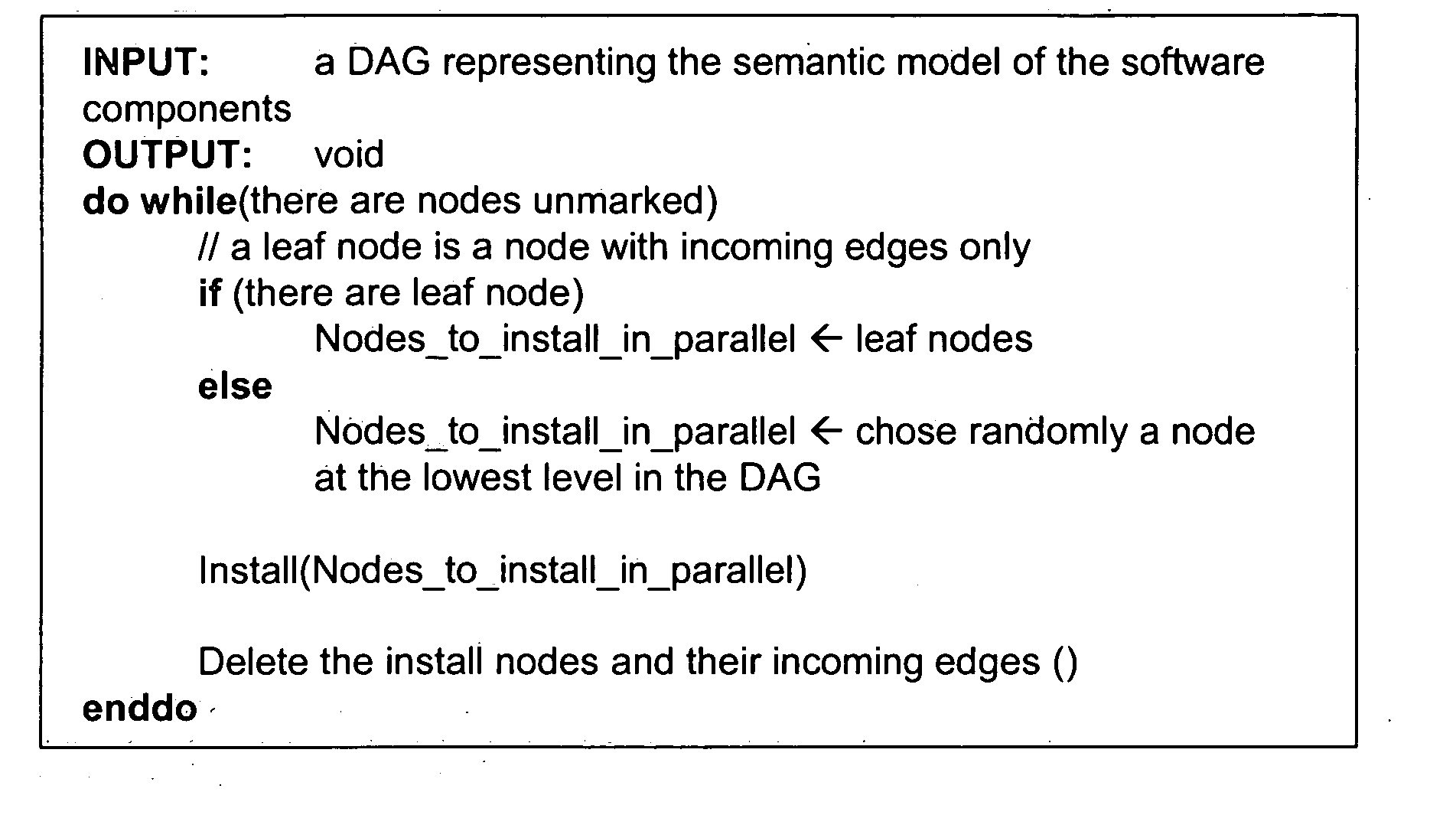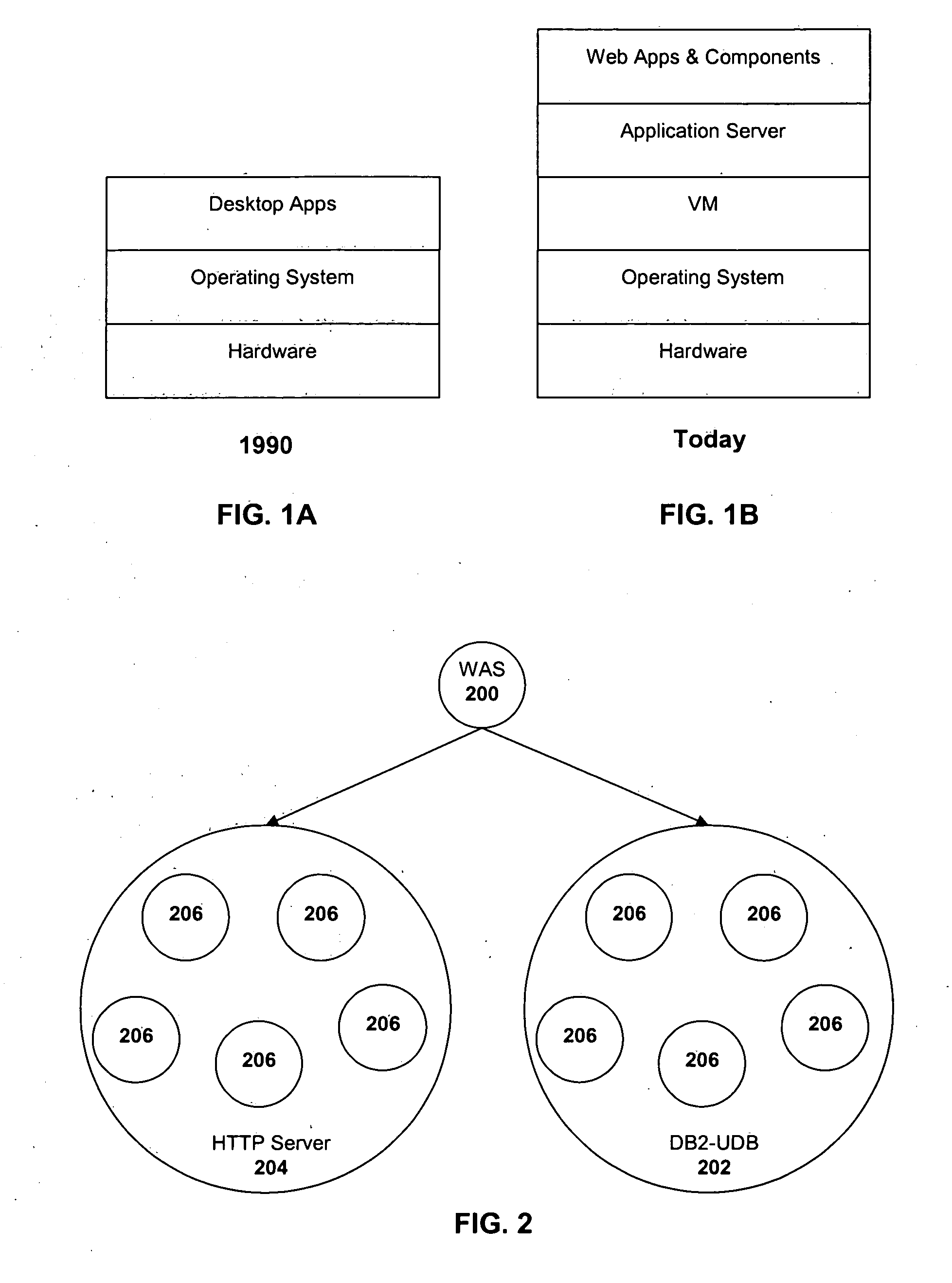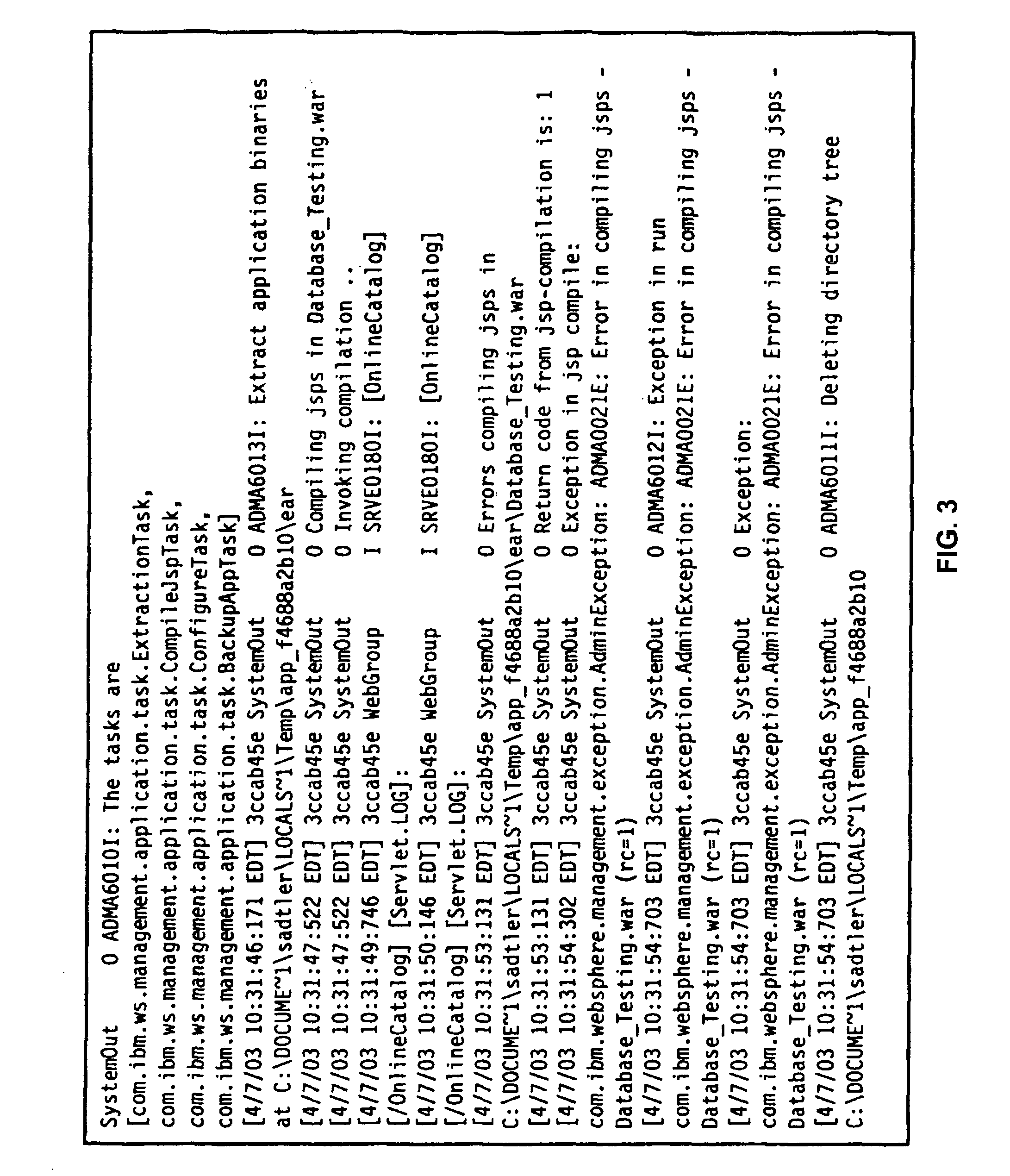Automatic parallel non-dependent component deployment
a technology of non-dependent components and automatic deployment, applied in the field of enterprise data systems, can solve the problems of increasing the time required, and increasing the time required, and achieve the effect of less time and less time for deploymen
- Summary
- Abstract
- Description
- Claims
- Application Information
AI Technical Summary
Benefits of technology
Problems solved by technology
Method used
Image
Examples
Embodiment Construction
[0024] In the following description, reference is made to the accompanying drawings which form a part hereof and which illustrate several implementations. It is understood that other implementations may be utilized and structural and operational changes may be made without departing from the scope of the present limitations.
[0025] The present invention employs a “semantic model” described more fully in commonly assigned and co-pending U.S. patent Ser. No. ______, filed ______, IBM Disclosure RSW8-2003-0414, entitled eREGISTRY RECORDER AND ROLL BACK, hereby incorporated by reference. Such a model, generated by the developer and included in the installation package, provides a “taxonomy” of all software components of interest, such as all software which IBM, for example, produces or uses. The model comprises a set of entries for each application, component and sub-component being installed (hereinafter collectively referred to as “components”). The model includes: [0026] references o...
PUM
 Login to View More
Login to View More Abstract
Description
Claims
Application Information
 Login to View More
Login to View More - R&D
- Intellectual Property
- Life Sciences
- Materials
- Tech Scout
- Unparalleled Data Quality
- Higher Quality Content
- 60% Fewer Hallucinations
Browse by: Latest US Patents, China's latest patents, Technical Efficacy Thesaurus, Application Domain, Technology Topic, Popular Technical Reports.
© 2025 PatSnap. All rights reserved.Legal|Privacy policy|Modern Slavery Act Transparency Statement|Sitemap|About US| Contact US: help@patsnap.com



